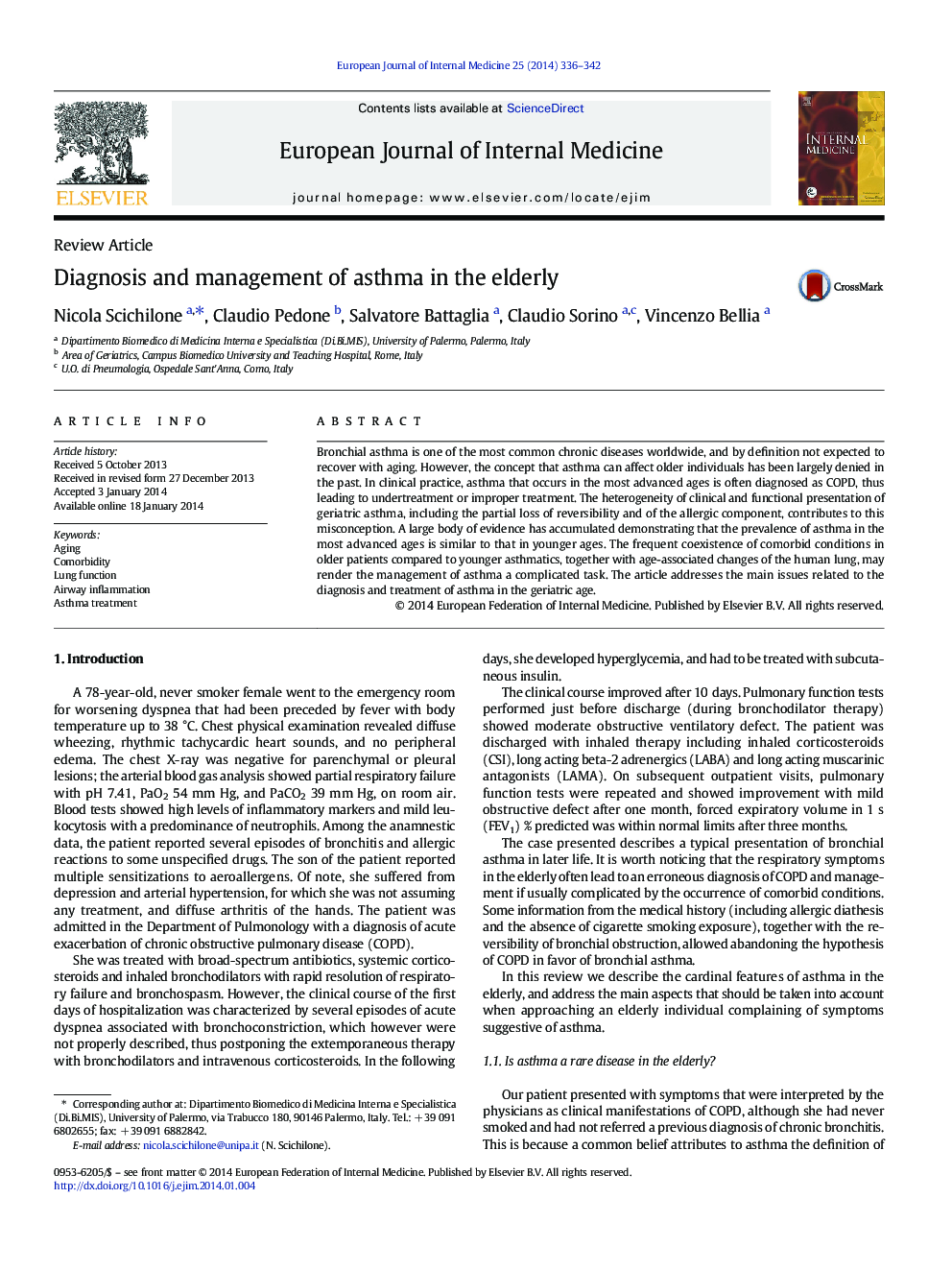| Article ID | Journal | Published Year | Pages | File Type |
|---|---|---|---|---|
| 3466784 | European Journal of Internal Medicine | 2014 | 7 Pages |
•The prevalence of asthma in the advanced ages is similar to that of younger ages.•In clinical practice, asthma in the most advanced ages is often diagnosed as COPD.•Pulmonary function tests are the hallmark for diagnosis of asthma in the elderly.•The presence of multiple comorbid conditions is the norm in the elderly patient.•The management of asthma in the elderly follows guidelines that apply to all ages.
Bronchial asthma is one of the most common chronic diseases worldwide, and by definition not expected to recover with aging. However, the concept that asthma can affect older individuals has been largely denied in the past. In clinical practice, asthma that occurs in the most advanced ages is often diagnosed as COPD, thus leading to undertreatment or improper treatment. The heterogeneity of clinical and functional presentation of geriatric asthma, including the partial loss of reversibility and of the allergic component, contributes to this misconception. A large body of evidence has accumulated demonstrating that the prevalence of asthma in the most advanced ages is similar to that in younger ages. The frequent coexistence of comorbid conditions in older patients compared to younger asthmatics, together with age-associated changes of the human lung, may render the management of asthma a complicated task. The article addresses the main issues related to the diagnosis and treatment of asthma in the geriatric age.
